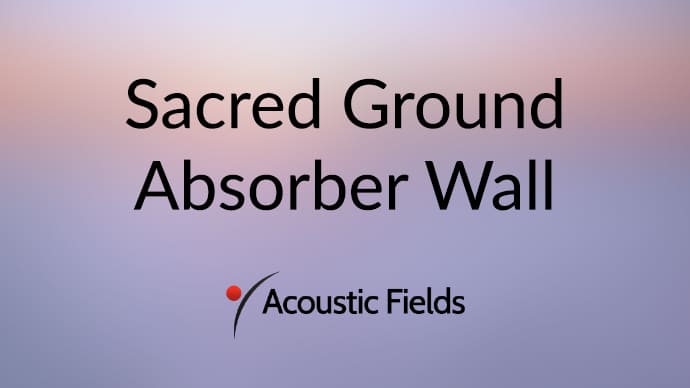We’re inside our new studio in Los Angeles and we just went through the pocket door which is on the left. And then you can see the room construction for the one wall on the right. This is our Absorber Wall technology. This has carbon between the stud spaces and then we take each stud space and we treat it as an individual absorber. So you can see the plates on each between the stud space, so each stud space is treated as a diaphragmatic absorber. That way we control the amount of energy we absorb in that particular room area. So the wall gives us that kind of complete control.
So this is a three quarter inch MDF as our front plate on this particular design. And you can kind of see that we separate each plate by a 16th inch. That allows for the movement, so the whole wall is like that, you can see. And there’s the ceiling system above it, so that gives you a little bit of an idea of how we build these walls and absorb all this low frequency energy inside the room. So it’s a good way to do that.
Also we have our pocket door here which we just went over in an other video, so it has the same surface density as the rest of the wall. We all know that sound is like water, it will find the weakest link in the structure. That can be a hole, an open hole between the surfaces. It can be an area of the wall that’s less dense; a window, a door. It can be a lot of different thing. So the goal is to get the right balance between rigidity and flexibility in your studio design. And you can do that, you know if you just put a little thought into it and you have a little knowledge about what you’re trying to accomplish.
But this is the south wall of the studio so it has our sound absorption technology in it and and well, as time goes on I’ll go through each one of the features and benefits of the new studio, so you can get an idea but this is how we do our absorber wall.
Thank you,
Dennis Foley
—
The following is an unedited transcript from our video series from Acoustic Fields. There will be some errors in grammar and sentence structure that occur during this translation process.
For complete understanding and comprehension, please view the video which is included in this text. For any additional information regarding this topic or others relating to room acoustics, please contact us directly at:
P: 520 – 392 – 9486








We are looking for a solution:
Hip hop and rap music for the patrons is producing bass frequency noise issues for the residents neighboring our facility — hundreds of yards away, across the parking lot and across a double lane boulevard. We want to respect the community and avoid a noise ordinance violation. Would the “DIY Bass Absorber” do the trick?
M, Using a sound absorption product to stop noise will not work. You need to measure the frequency and amplitude of the noise and then design the barrier based upon those numbers. A barrier is a permanent structure.